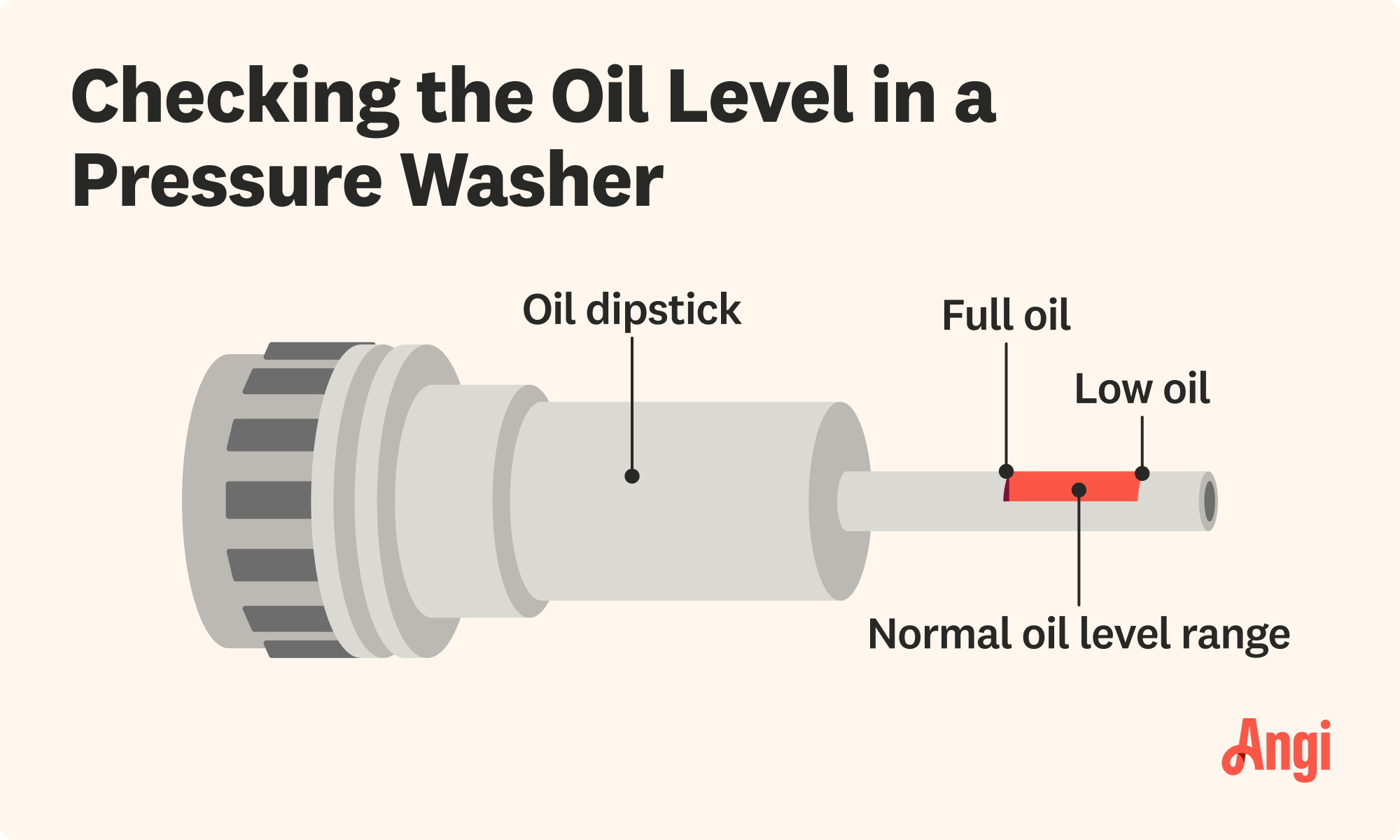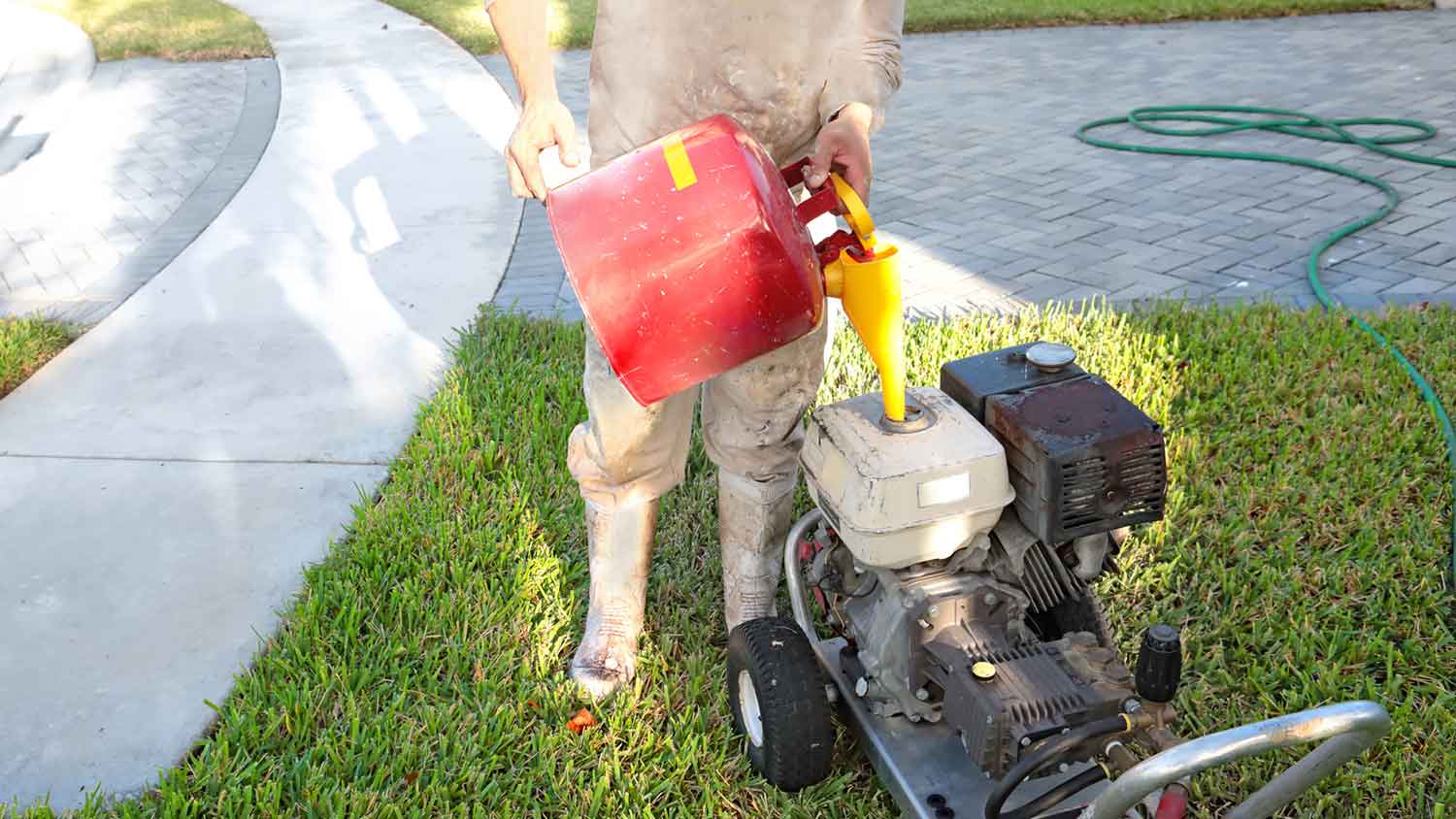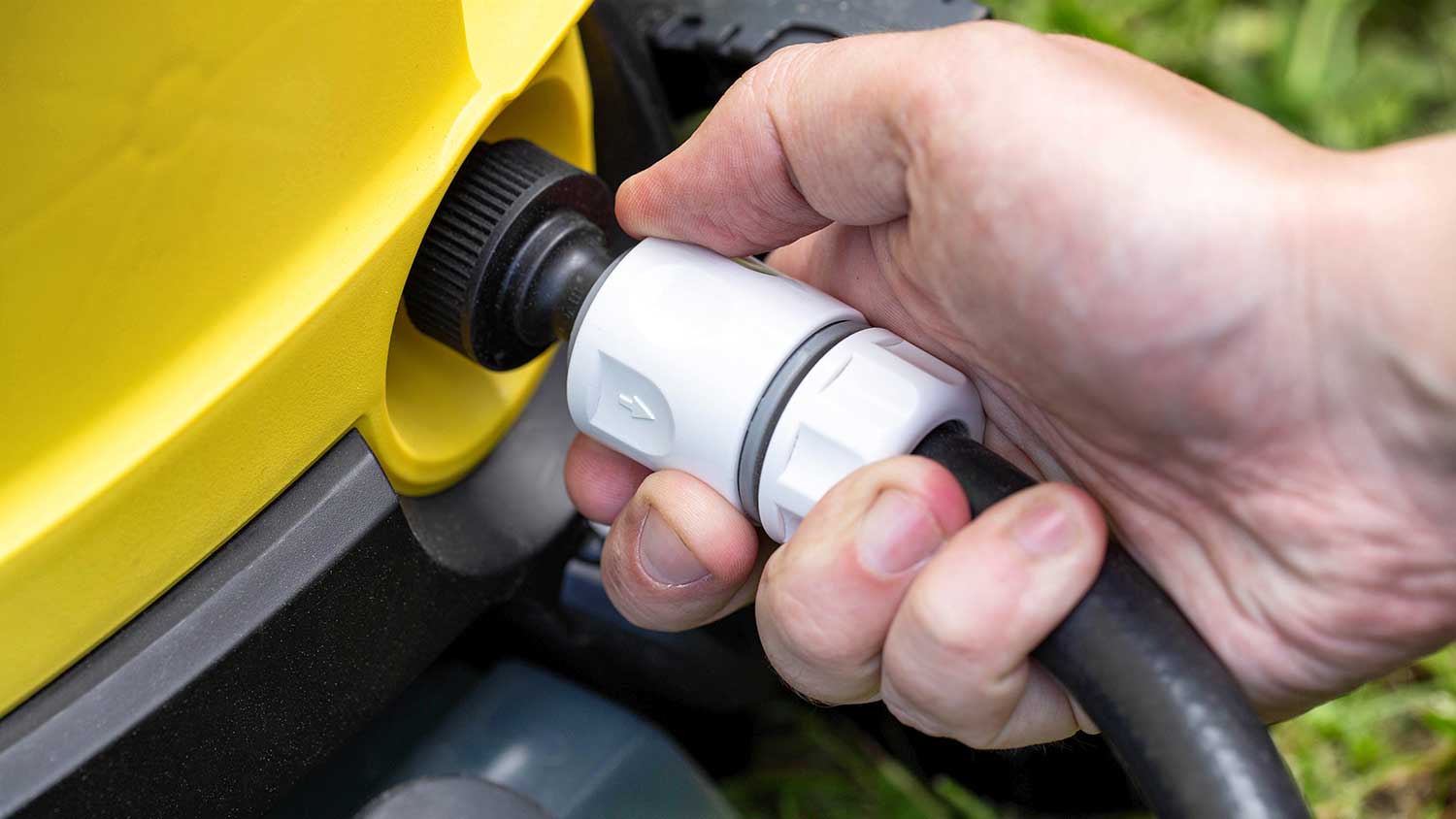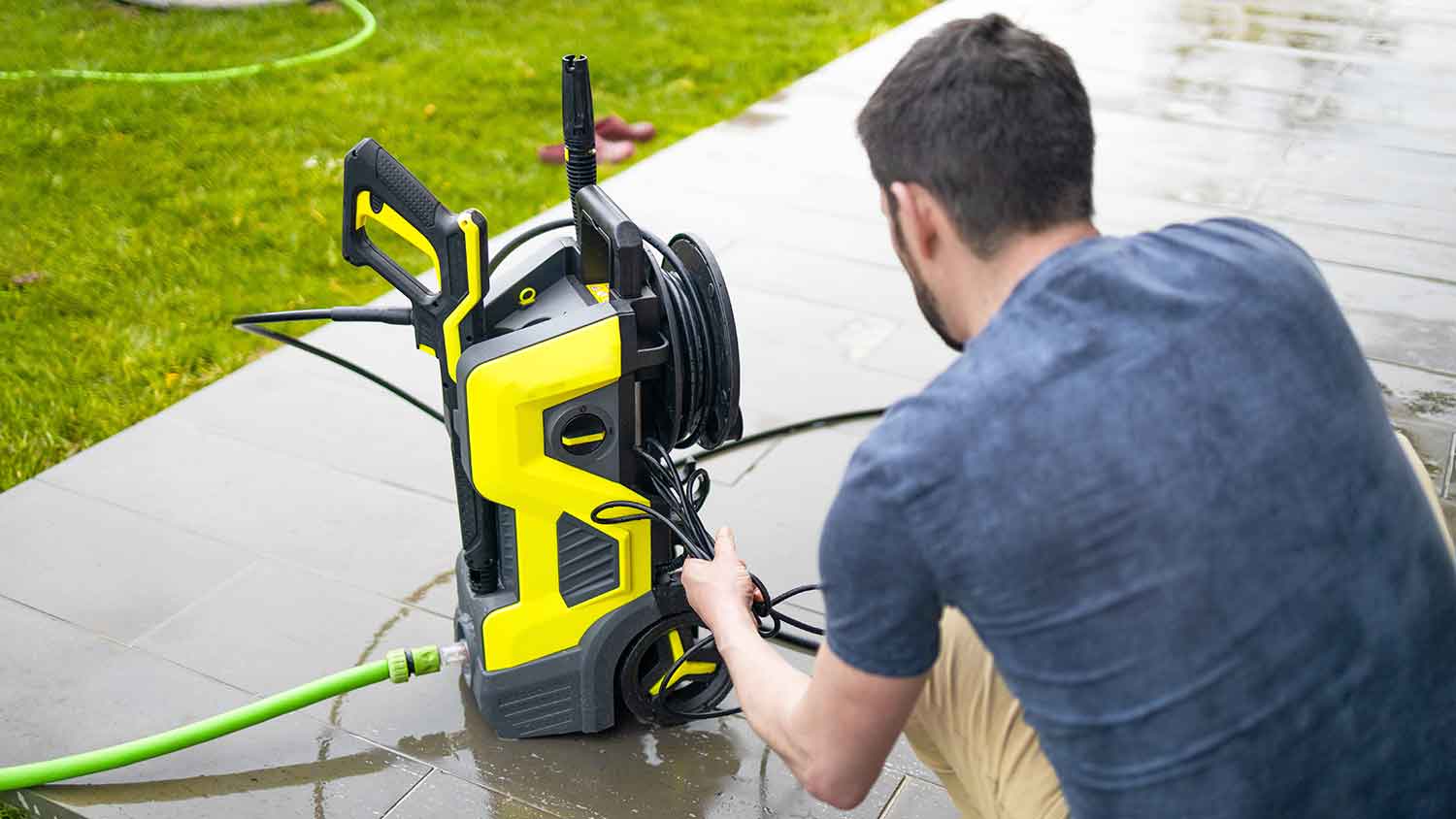
The cost to pressure wash a deck depends on its size, condition, material, and whether you DIY the job. Help set your budget with this cost guide.
Wash away common pressure washer problems with a little TLC


Pressure washing can help you maintain your home’s siding, sidewalks, driveways, and decks, but pressure washers come with some maintenance needs of their own. Failing to keep up with pressure washer maintenance could leave you with a streaky finish on your next deep-cleaning project, not to mention you’ll need to shell out for the cost of a new pressure washer much sooner. Instead, check off these essential tasks on your pressure washer maintenance checklist.

One of the biggest pressure washing mistakes is forgetting to make sure that your gas-powered pressure washer is topped up with fuel and that the oil isn’t too low or old.
Before connecting the pressure washer to the water supply and firing up the wand, top up the gas reservoir. Check the oil dipstick and add more oil if the level is too low. If you’ve used the pressure washer for more than 20 hours or the oil hasn’t been changed in three months, drain the old oil and refresh it.
A pressure washer has a little water inlet screen that connects to a garden hose. This screen catches any debris from the water supply to prevent it from entering the pressure washer. Make sure to remove and rinse out this screen before each use.
Pressure washers have many different parts that can wear out and compromise the entire machine. Before each use, look closely at the nozzle and wand, the O-rings and connectors, the hose, and the nuts and bolts to make sure everything is clean, free of corrosion, and screwed on tightly.
The pressure washer pump applies force to the water, causing it to flow and allowing it to become pressurized in the machine. But corrosion, mineral buildup, and other contaminants can damage the pump. Use lubricating products known as pump savers to protect the pump from these contaminants.

Small machines like pressure washers work better on ethanol-free, or at least low-ethanol, gas. To keep your machine running smoothly, choose ethanol-free gas, also known as premium, for a gas-powered pressure washer. If you don’t want to spend more on premium gas, at least invest in a low-ethanol gas, which could save you money in the long run by extending the life of your pressure washer.
If you’re curious about the performance of pressure washers on ethanol-free gas versus regular gas, a local power washing company would be happy to walk you through the difference and give you advice on your upcoming DIY.
If you’re going to keep the pressure washer in the garage for a month or two, add fuel stabilizer to preserve the gas you’ve put in the pressure washer. Adding stabilizer is one of the best pressure washing tips to keep your machine running smoothly. This product keeps the fuel fresh and stops it from absorbing water and becoming gummy, which could disrupt your next power washing session.

A pressure washer could leak oil or water if the O-rings and other connectors throughout the machine become dry or corroded and crack. Use lubricant on the O-rings and any connecting parts once per season or after 50 hours of use. Focus on the area where the pressure washer wand and hose connect and where the garden hose connects to the pressure washer.
Once you’ve finished pressure washing your driveway or patio, don’t just stash the machine in the garage. If you used detergent for a deeper clean, flush out any extra cleaner from the detergent reservoir on the pressure washer. Otherwise, you’ll be left with residue that could build up and affect your next pressure washing session. Rinse out the detergent with water and put water through the detergent intake until it runs clear to ensure the detergent is all gone.
Regardless of the PSI you use for your pressure washer, you can overheat the machine if you don’t release pressure from the wand every so often. If you need to pause your pressure washing job for several minutes but don’t want to shut off the machine, make sure to spray the wand trigger once per minute to prevent overheating.
If you don’t drain all the water from the pressure washer and its hoses after you use it, you risk ruining those satisfying pressure washing before-and-afters with dirty, streaky results. When water sits in the pressure washer, it can become grimy, attract pests, or even lead to mold and mildew growth.

No matter what you use your pressure washer for, you’ll need to handle the high-pressure hose carefully to prevent kinks, cracks, and leaks. After you finish using your pressure washer, roll up its hose in a neat circle and store it in the same shape.
After pressure washing and draining any excess water or detergent, keep the pressure washer in a dry location to prevent rust or corrosion from forming on the machine parts. For gas pressure washers that still have gas or oil in them for short-term storage, keep the machine on a flat, stable surface to prevent fuel spills.
Winterizing your pressure washer is one of the most important tasks on your pressure washer maintenance checklist. It’s always important to take precautions when storing a pressure washer for a week to a couple of months. However, stowing this machine away for winter or more than two months requires even more care to prevent damage. Stash your pressure washer somewhere dry and warm on a flat surface.
Drain the gas and change the oil before storing gas-powered pressure washers. For electric models, remove the battery and store it in a dry area on a stable surface. You’ll also want to charge the battery before using the pressure washer again in the spring. For either type, make sure to rinse the pressure washer nozzle with antifreeze to protect against freezing temperatures.
Even the most well-maintained machine will need some pressure washer repairs from time to time. With so much water running through the system, plus long periods of disuse, pressure washers are prone to needing part replacements.
What parts you need to inspect and replace depends on whether you have a gas versus an electric pressure washer. Either way, here are several parts to inspect and replace after 100 hours of use or annually:
Air filter
Water inlet screen
Spark plug
Fuel lines
Plugs and cords
If you don’t know how to change out these parts or you’d rather skip the pressure washer maintenance altogether, hire a power washing pro near you.
The pros will have their own equipment for pressure or power washing, or they can help you make repairs to your personal equipment. You’ll be enjoying the fresh, clean look of your siding and hardscaping in no time when you call in a pro.
From average costs to expert advice, get all the answers you need to get your job done.

The cost to pressure wash a deck depends on its size, condition, material, and whether you DIY the job. Help set your budget with this cost guide.

Need to breathe new life into your dirty siding and trim? Explore the cost to pressure wash a house to boost your curb appeal instantly.

Pressure washing your fence can restore its appearance and keep your home looking great. Learn how much it costs based on factors like square footage and material.

A pressure washer is a useful tool for home cleaning projects but can cause serious damage when used incorrectly. Here’s how to avoid pressure washing mistakes.

Now that you own a new pressure washer, learn how to use it like a professional so you can clean your driveway, siding, deck, and quickly and thoroughly.

This guide to the best bleach alternative for pressure washing will help you find a way to clean your home's exterior without causing damage.